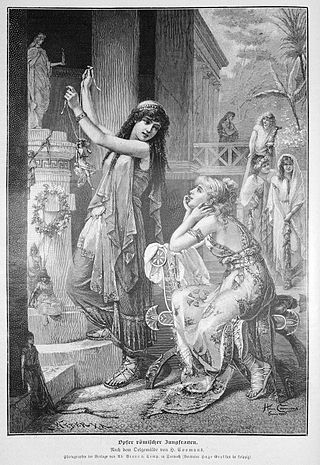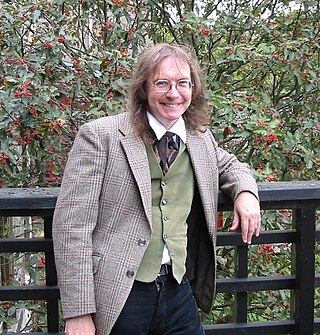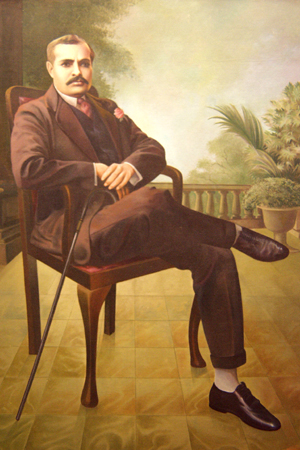The Christian countercult movement or the Christian anti-cult movement is a social movement among certain Protestant evangelical and fundamentalist and other Christian ministries and individual activists who oppose religious sects that they consider cults.

Modern paganism, also known as contemporary paganism and neopaganism, is a type of religion or family of religions influenced by the various historical pre-Christian beliefs of pre-modern peoples in Europe and adjacent areas of North Africa and the Near East. Although they share similarities, contemporary pagan movements are diverse and as a result, they do not share a single set of beliefs, practices, or texts. Scholars of religion often characterise these traditions as new religious movements. Some academics who study the phenomenon treat it as a movement that is divided into different religions while others characterize it as a single religion of which different pagan faiths are denominations.

Paganism is a term first used in the fourth century by early Christians for people in the Roman Empire who practiced polytheism, or ethnic religions other than Judaism. In the time of the Roman Empire, individuals fell into the pagan class either because they were increasingly rural and provincial relative to the Christian population, or because they were not milites Christi. Alternative terms used in Christian texts were hellene, gentile, and heathen. Ritual sacrifice was an integral part of ancient Graeco-Roman religion and was regarded as an indication of whether a person was pagan or Christian. Paganism has broadly connoted the "religion of the peasantry".
Religious conversion is the adoption of a set of beliefs identified with one particular religious denomination to the exclusion of others. Thus "religious conversion" would describe the abandoning of adherence to one denomination and affiliating with another. This might be from one to another denomination within the same religion, for example, from Protestant Christianity to Roman Catholicism or from Sunnī Islam to Shīʿa Islam. In some cases, religious conversion "marks a transformation of religious identity and is symbolized by special rituals".

A new religious movement (NRM), also known as alternative spirituality or a new religion, is a religious or spiritual group that has modern origins and is peripheral to its society's dominant religious culture. NRMs can be novel in origin or they can be part of a wider religion, in which case they are distinct from pre-existing denominations. Some NRMs deal with the challenges that the modernizing world poses to them by embracing individualism, while other NRMs deal with them by embracing tightly knit collective means. Scholars have estimated that NRMs number in the tens of thousands worldwide. Most NRMs only have a few members, some of them have thousands of members, and a few of them have more than a million members.
Earth-centered religion or nature worship is a system of religion based on the veneration of natural phenomena. It covers any religion that worships the earth, nature, or fertility deity, such as the various forms of goddess worship or matriarchal religion. Some find a connection between earth-worship and the Gaia hypothesis. Earth religions are also formulated to allow one to utilize the knowledge of preserving the earth.

Ronald Edmund Hutton is an English historian who specialises in early modern Britain, British folklore, pre-Christian religion and Contemporary Paganism. He is a professor at the University of Bristol, has written 14 books and has appeared on British television and radio. He held a fellowship at Magdalen College, Oxford, and is a Commissioner of English Heritage.

Slain in the Spirit or slaying in the Spirit are terms used by Pentecostal and charismatic Christians to describe a form of prostration in which an individual falls to the floor while experiencing religious ecstasy. Believers attribute this behavior to the power of the Holy Spirit. Other terms used to describe the experience include falling under the power, overcome by the Spirit, and resting in the Spirit. The practice is associated with faith healing because individuals are often slain while seeking prayer for illness.
A cult is a group which is typically led by a charismatic and self-appointed leader, who tightly controls its members, requiring unwavering devotion to a set of beliefs and practices which are considered deviant. It is in most contexts a pejorative term, also used for a new religious movement or other social group which is defined by its unusual religious, spiritual, or philosophical beliefs and rituals, or its common interest in a particular person, object, or goal. This sense of the term is weakly defined – having divergent definitions both in popular culture and academia – and has also been an ongoing source of contention among scholars across several fields of study.
The anti-cult movement consists of various governmental and non-governmental organizations and individuals that seek to raise awareness of cults, uncover coercive practices used to attract and retain members, and help those who have become involved with harmful cult practices.
The academic study of new religious movements is known as new religions studies (NRS). The study draws from the disciplines of anthropology, psychiatry, history, psychology, sociology, religious studies, and theology. Eileen Barker noted that there are five sources of information on new religious movements (NRMs): the information provided by such groups themselves, that provided by ex-members as well as the friends and relatives of members, organizations that collect information on NRMs, the mainstream media, and academics studying such phenomena.
Danny Lynn Jorgensen is an American professor at the Department of Religious Studies of the University of South Florida, for which he also served as chair from 1999 to 2006.
David V. Barrett is a British sociologist of religion who has widely written on topics pertaining to new religious movements and western esotericism. He is also a regular contributor to The Independent, Fortean Times, and the Catholic Herald.
The application of the labels "cults" or "sects" to religious movements in government documents usually signifies the popular and negative use of the term "cult" in English and a functionally similar use of words translated as "sect" in several European languages. Government reports which have used these words include ones from Austria, Belgium, Canada, China, France, Germany, and Russia. While these documents utilize similar terminology they do not necessarily include the same groups nor is their assessment of these groups based on agreed criteria. Other governments and world bodies also report on new religious movements but do not use these terms to describe them.

Lekhraj Khubchand Kirpalani, also known as Dada Lekhraj, was an Indian guru who was the founder of the Brahma Kumaris.

Various sociological classifications of religious movements have been proposed by scholars. In the sociology of religion, the most widely used classification is the church-sect typology. The typology is differently construed by different sociologists, and various distinctive features have been proposed to characterise churches and sects. On most accounts, the following features are deemed relevant:

FECRIS – (in French)European Federation of Centres of Research and Information on Sectarianism, a French non-profit association and anti-cult organization, serves as an umbrella organization for groups which investigate the activities of groups considered cults in Europe.

Deadly Cults: The Crimes of True Believers is a book about cults by Robert L. Snow. It was published November 30, 2003 by Praeger Publishers in hardcover format. Snow, a retired police captain and former commander of the homicide branch of the Indianapolis Police Department, has authored several other books on crime including SWAT Teams and Technology and Law Enforcement.

INFORM (Information Network Focus on Religious Movements) is an independent registered charity located in the Department of Theology and Religious Studies at King's College, London; from 1988-2018 it was based at the London School of Economics. It was founded by the sociologist of religion, Eileen Barker, with start-up funding from the British Home Office and Britain's mainstream churches. Its stated aims are to "prevent harm based on misinformation about minority religions and sects by bringing the insights and methods of academic research into the public domain" and to provide "information about minority religions and sects which is as accurate, up-to-date and as evidence-based as possible."










